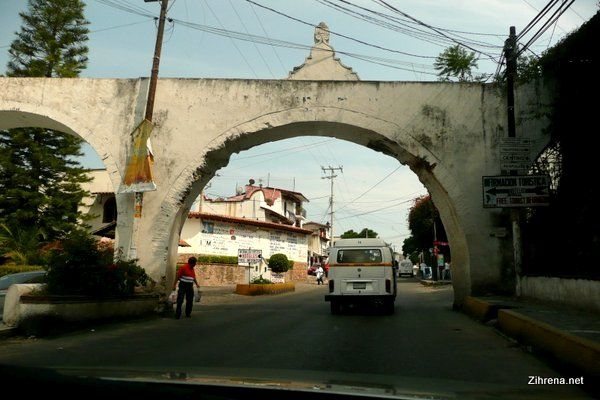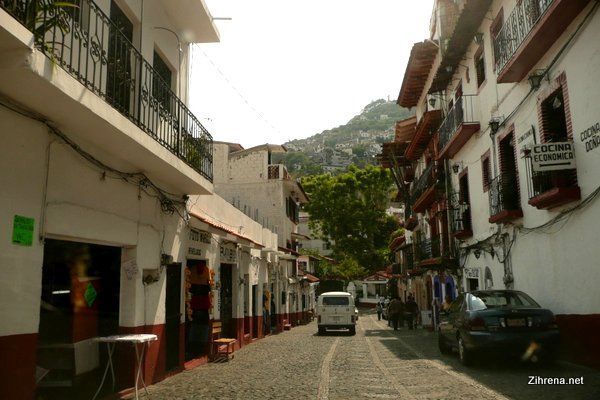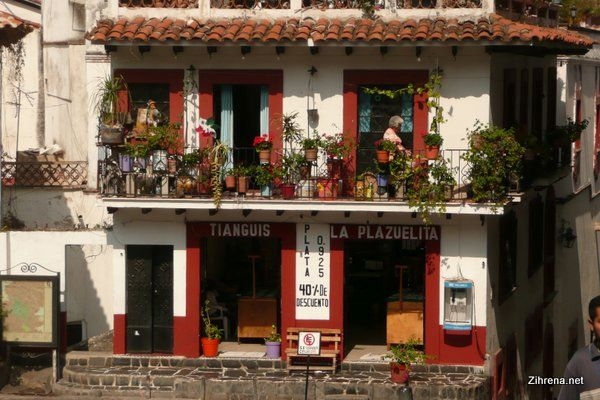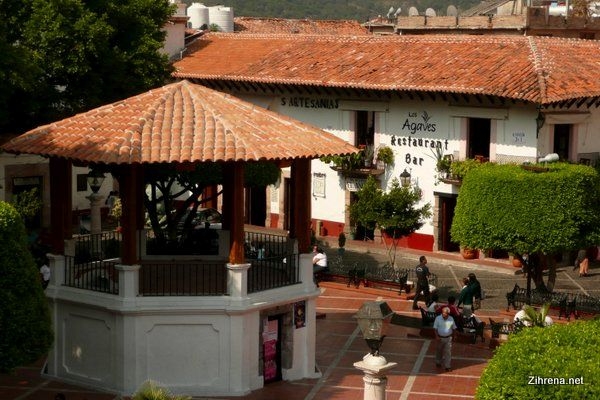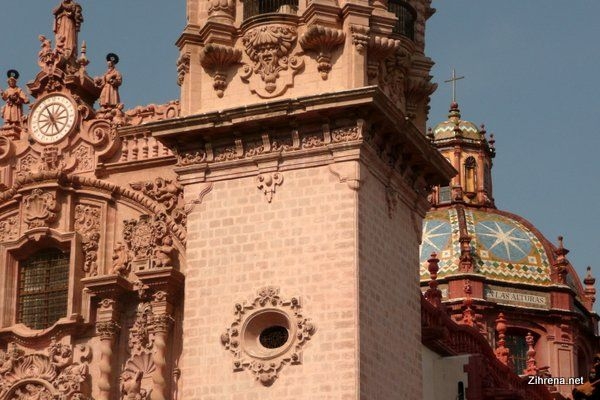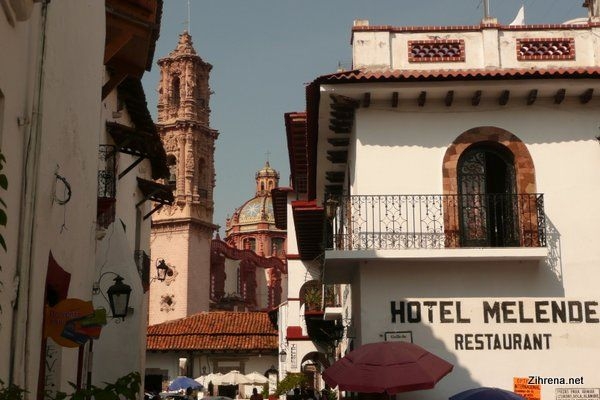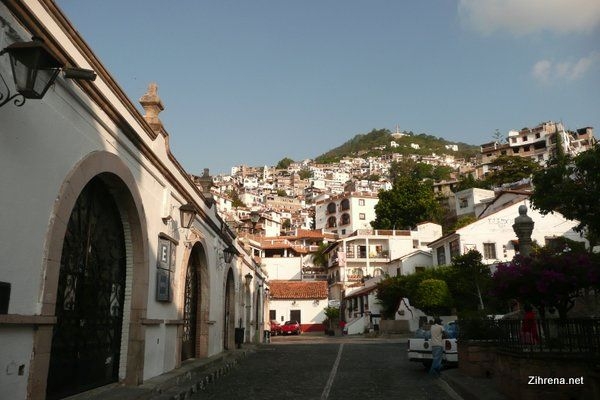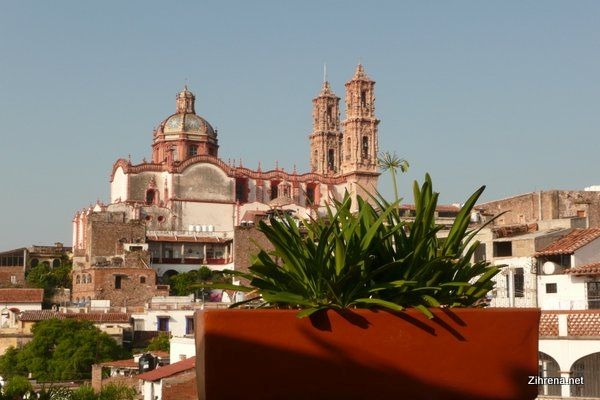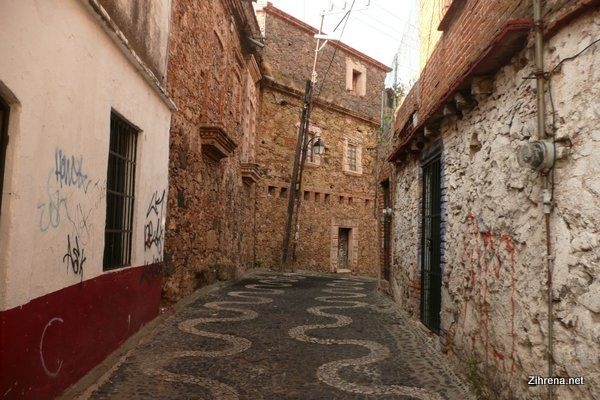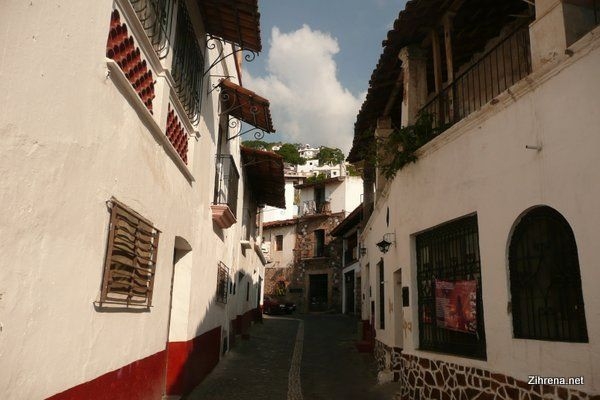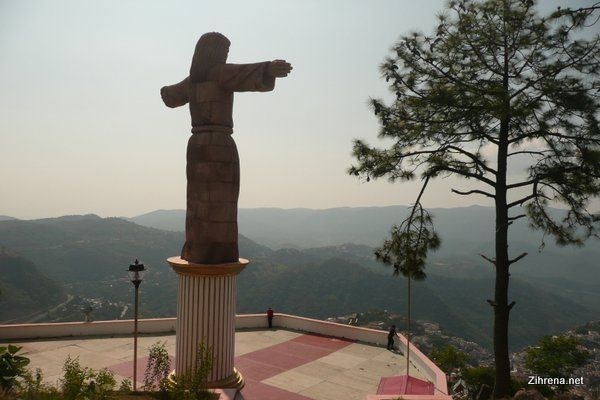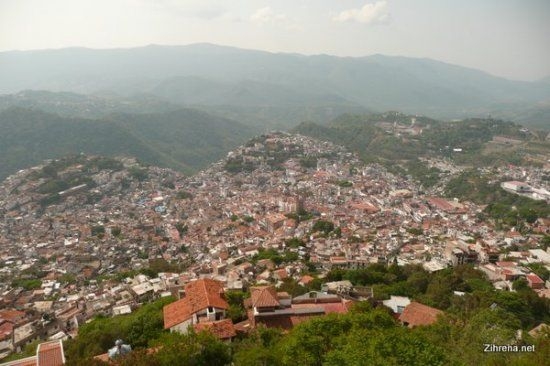Taxco de Alarcón is located in the hills of Central Mexico. It is one of Mexico’s Pueblos Mágicos, or magical villages. It is, in fact, the only Magical Village within the Mexican state of Guerrero, wherein lie the Pacific coast beach destinations of Acapulco and Ixtapa Zihuatanejo.
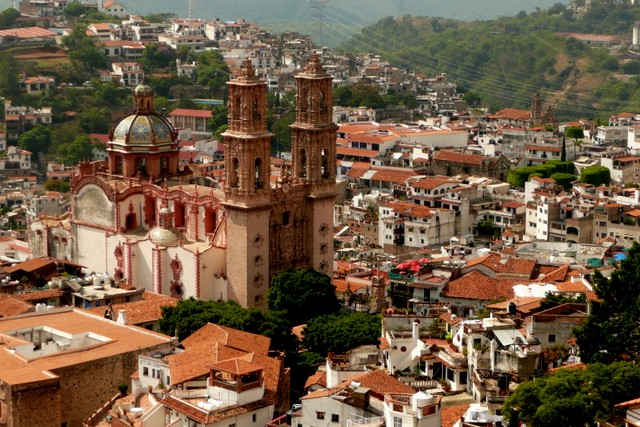
Zihrena.net All Rights Reserved.
Taxco is one of Mexico’s silver cities that lies at an altitude of 1,645 meters above sea level in the sierra of Central Mexico. Even though metals were extracted from the area long before the advent of the Spanish, the location holds the claim to being the site of the first mine, Socavon del Rey, to be established by the newcomers as they looked to extract gold and silver from their territory of New Spain.
First named Tetelcingo, the city was renamed Taxco de Alarcón in 1872 in honor of poet and playwright Juan Ruiz de Alarcón, who was born in this mining city in 1580.
Taxco, with its colonial architecture, cobblestone streets that wind narrowly up and down the hillside and the magnificent Santa Prisca Church on Borda Plaza, was declared a Mexican national historical monument by the INAH (Instituto Nacional de Antropología e Historia) in 1990.
Taxco Silver
Although Taxco’s mines no longer yield much ore, as the natural reserves have been largely depleted over the past centuries, Taxco is still famous for its silversmiths and silver shops. In the town center, surrounding the Borda Plaza and Santa Prisca church, are numerous stores offering extensive arrays of fine silver jewelry, goblets, platters and decorative articles. Many silver stalls are also to be found in the bustling market below the square, tucked in amid the winding, cobblestone streets. When shopping for silver in Taxco or anywhere else, make sure that the silver is stamped with the official .925 mark of sterling silver or, if it’s a small piece of jewelry, that a tiny tag marked .925 is attached to it.
Why look for the .925 mark on silver? Why .925? In order for silver to be suitable and durable enough for the wear and tear of jewelry and other items, the metal is alloyed with a small amount of copper. Sterling Silver, comprising 92.5% silver and 7.5% copper, has been the standard for jewelry since the 14th century in many parts of the world.
Sightseeing
The best and most revealing way to see Taxco is simply on foot, with a sturdy pair of good, comfortable walking shoes with non-slip soles on your feet. The narrow, winding streets open up to sudden, startling vistas or telescope into evocative and intimate glimpses into a world that seems to emerge from the past as you spiral up or down the stairs and alleyways carved into the hillsides.
Take a trek or a taxi high up onto the hill above Taxco to the massive Christ monument — an incredible vantage point from which to overlook the entire town with its white walls and red tile roofs cascading down the mountainside. Don’t miss a visit to the Church of Santa Prisca, located to one side of Taxco’s main plaza (Plaza Borda). This beautiful church was constructed between 1751 and 1758 at the request of Don José de la Borda, one of Taxco’s silver-mining barons, to the Archbishop of Mexico. Santa Prisca’s pink stone exterior lends a warm, soft glow over the building and the surrounding structure, and the facade and interior decorations are Mexico’s best and most delightful examples of Mexican baroque.
Visit the Hacienda de El Chorrillo, located on the northern end of Taxco. This important silver hacienda was constructed curing the time of Hernán Cortés for the extraction of the precious metal from the ores of the Taxco silver mines. The highway approaching Taxco from the north passes under a portion of the hacienda’s old aqueduct. In the 1980s the Guerrero state government installed a fine arts center in the hacienda and currently it houses the Centro de Estudios para Extranjeros and a campus of the Fine Arts School of National Autonomous University of Mexico (UNAM).
The Spratling Museum, located near Plaza Borda in downtown Taxco, houses a collection of archaeological artifacts donated by master silversmith William Spratling (1906–1967) to the people of Taxco.
Spratling’s earliest work can be characterized as inspired expressions in silver, resembling the power of the reliefs on the Temple of Quetzalcoatl at Xochicalco or the pre-Columbian clay stamps he admired. The designs incorporate sinuous lines that were deeply carved, with strong light and shadow contrasts. The inspiration from pre-Columbian models could be direct, as in the repousse Quetzalcoatl brooch, based on the heart bowl in the Museo Nacional de Antropología, or indirect, like the silver pitcher with the eagle handle in carved wood. […] Spratling’s later work is more linear and refined. The croissant necklace has a great deal of movement, but now based on abstract form. Spratling’s maker’s mark in this period once again took the form of a circle, this time with the script “WS” surrounded by the words, “William Spratling Taxco Mexico”. In the 1960s, Spratling began producing jewelry in gold with pre-Columbian stones. Each piece was unique and marked with a simple “WS” beneath “18K”.
Wikipedia contributors, “William Spratling,” Wikipedia, The Free Encyclopedia, http://en.wikipedia.org/w/index.php?title=William_Spratling&oldid=598127803 (accessed May 29, 2014).
Special Events and Festivals
- On January 17 and 18, animals are brought to the Santa Prisca Church to be blessed during the annual “Festival de Santa Prisca.” The festival includes a fair with music and fireworks.
- Semana Santa (Holy Week) – Taxco’s Easter festivities and processions are some of the most notable in all of Mexico
- May – the Alarconian Theatrical Festival (Jornadas Alarconianas) is held in Taxco
- November – the National Silver Fair (Feria Nacional de la Plata) is held from November 27 through December 5 every year.
One wild way to see Taxco and get an idea of the steepness of the hills on which it is built.
- http://www.visitmexico.com/es/pueblosmagicos/region-pacifico/taxco-de-alarcon
- Mallan, Chicki, and Oz Mallan; Colonial Mexico (Emeryville, CA, Avalon Travel, 2001)
- Wikipedia contributors, “Sterling silver,” Wikipedia, The Free Encyclopedia, http://en.wikipedia.org/w/index.php?title=Sterling_silver&oldid=600450282 (accessed May 29, 2014).
